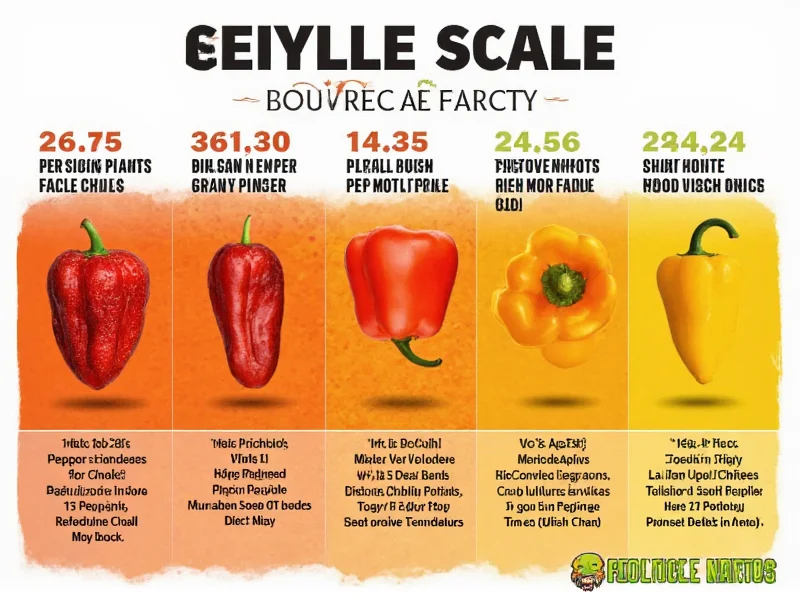Native to the Hatch Valley region of New Mexico, Hatch chile peppers have earned Protected Geographical Indication status, meaning only peppers grown in this specific area can legally bear the "Hatch" name. These peppers come in both green (unripe) and red (ripe) varieties, with the red version generally packing more heat due to increased capsaicin concentration as they mature.
Understanding the Scoville Scale Context
The Scoville scale measures chili pepper heat intensity by determining capsaicin concentration. Developed by pharmacist Wilbur Scoville in 1912, this measurement system remains the standard for comparing pepper heat levels. Modern testing uses high-performance liquid chromatography for precise measurements, but results still convert to Scoville Heat Units for consumer understanding.
When evaluating where Hatch chiles fall on this spectrum, consider that their heat level sits comfortably between bell peppers (0 SHU) and jalapeños (2,500-8,000 SHU). This makes Hatch chiles an excellent choice for those seeking flavorful heat without overwhelming spiciness.
Hatch Chile Heat Range Explained
The 1,000-8,000 SHU range for Hatch chiles represents significant variability. Several factors influence where a specific Hatch pepper falls within this spectrum:
- Ripeness: Green Hatch peppers typically measure 1,000-4,000 SHU, while red Hatch peppers range from 4,000-8,000 SHU
- Growing conditions: Soil composition, water availability, and temperature fluctuations affect capsaicin production
- Specific variety: Big Jim, Sandia, and Española varieties each have distinct heat profiles
- Individual pepper variation: Even within the same plant, heat levels can differ significantly
| Pepper Variety | Scoville Heat Units | Heat Comparison |
|---|---|---|
| Hatch Chile (Green) | 1,000-4,000 SHU | Mild to medium |
| Hatch Chile (Red) | 4,000-8,000 SHU | Medium |
| Jalapeño | 2,500-8,000 SHU | Medium |
| Serrano | 10,000-23,000 SHU | Medium-Hot |
| Cayenne | 30,000-50,000 SHU | Hot |
Factors Influencing Hatch Chile Heat Levels
Understanding what affects the heat of Hatch chiles helps consumers select the right peppers for their culinary needs. The Hatch Valley's unique terroir—comprising its high desert climate, mineral-rich soil, and irrigation from the Rio Grande—creates ideal growing conditions that produce peppers with distinctive flavor and heat characteristics.
Environmental stressors actually increase capsaicin production. When Hatch peppers experience drought conditions or temperature extremes, they typically develop higher heat levels. This explains why heat can vary significantly between growing seasons and even between fields within the same region.
The specific Hatch chile variety also determines heat potential. The Big Jim variety generally stays on the milder end (1,000-2,500 SHU), while the Sandia variety often reaches the higher end of the spectrum (5,000-8,000 SHU). The Española variety typically falls in the middle range (3,000-5,000 SHU).
Culinary Applications Based on Heat Level
Chefs and home cooks value Hatch chiles for their flavor complexity that extends beyond mere heat. The mild heat level of green Hatch chiles makes them perfect for dishes where pepper flavor should shine without overwhelming spiciness—think stuffed peppers, chile rellenos, and creamy chile sauces.
Red Hatch chiles, with their higher heat and sweeter flavor profile, work well in salsas, stews, and as a base for hot sauces. Their moderate heat allows the distinctive earthy, slightly smoky flavor to come through without dominating other ingredients.
When substituting Hatch chiles in recipes, consider their position on the Scoville scale. For milder dishes, use green Hatch peppers or remove seeds and membranes. For more heat, opt for red varieties or add complementary spices like cumin that enhance perceived heat without increasing actual capsaicin levels.
Common Misconceptions About Hatch Chile Heat
Several myths persist about Hatch chile peppers and their heat levels. Many consumers mistakenly believe all Hatch chiles are extremely hot, when in reality they're milder than many common peppers like serranos or cayennes. Others assume the green version is always hotter than the red, when the opposite is generally true.
Another frequent misunderstanding involves the relationship between pepper size and heat. Smaller Hatch peppers aren't necessarily hotter—heat depends more on variety and growing conditions than physical size. The seeds and white membranes contain the highest concentration of capsaicin, so removing these reduces heat regardless of pepper size.
Seasonality and Availability Considerations
True Hatch chiles have a limited harvest season from late summer through early fall, typically August to October. During this "Hatch chile season," fresh peppers flood markets across the Southwest and increasingly nationwide. The seasonal nature affects both flavor and heat, with early harvest peppers generally milder than late-season varieties.
Outside the harvest season, consumers can find frozen, canned, or dried Hatch chiles. These preserved forms maintain much of the original flavor, though heat levels may diminish slightly with processing. Roasted frozen Hatch chiles remain particularly popular for off-season cooking.











 浙公网安备
33010002000092号
浙公网安备
33010002000092号 浙B2-20120091-4
浙B2-20120091-4